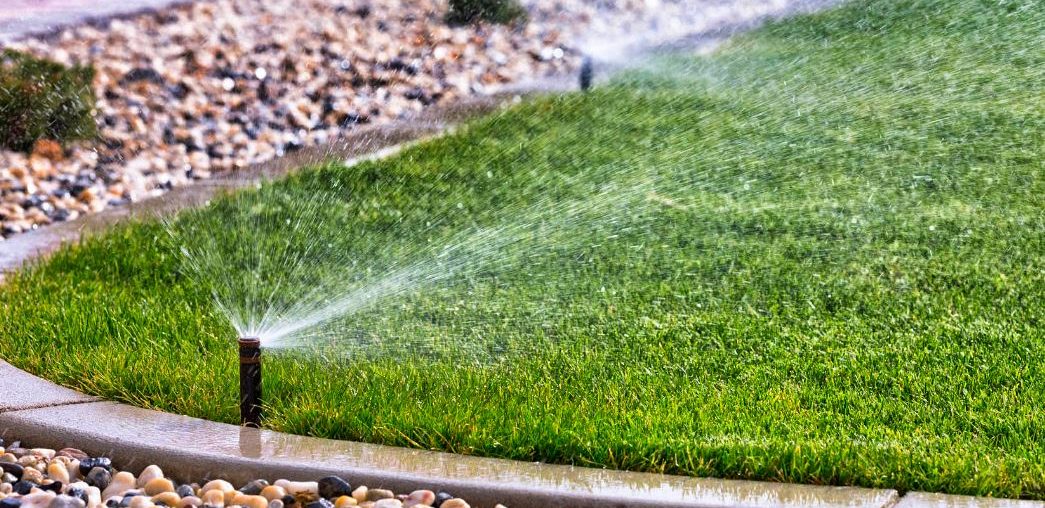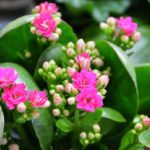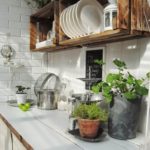The rain that lasts, a forgotten watering, an extended vacation … and your garden will quickly turn gray: flowers and vegetables sloppy, yellowed lawn, bare trees. To avoid such disappointments, be prepared by installing a watering system, manual or automated.
Water is essential to the life of the garden. It allows the plants to remain very straight. Similarly, it ensures the feeding of plants by transporting the mineral elements drawn from the soil.
Finally, it plays the role of air conditioner avoiding, by sweat effect, that the internal temperature of the plants goes up too high, thus risking to kill them.
Water represents between 60 and 96% of the composition of plants. It comes mainly from the soil, a real reservoir, where it is drawn by the roots. The more clay the ground, the more it holds the liquid. Conversely, the more sandy it is, the more water disappears quickly in the basement. Organic matter, which gives this black color to the earth, is important because it acts like a sponge. The higher its content, the more water will be retained on the surface, available to plants.
The right amount of water at the right time
All the gardener's art is to distribute the water to the plants at the right moment and at the right dose, in order to avoid waste. In clay soils, with high retention, water will be brought in large quantities so that the plant can have what it needs despite the presence of clay. In sandy soil, a true strainer, avoid too large inputs that only enrich the subsoil. In practice, bring 40 to 50 l / m2 once a week on clay soil. On sandy ground, water twice a week, at the rate of 20 to 25 l / m2 at each intake.
In autumn and especially in spring, it is better to water in the morning so that the soil has time to dry out during the day. This technique helps to avoid damage in case of night frost. In summer, on the contrary, water late in the evening to limit evaporation. The best time is between 2 and 5 o'clock in the morning! Never water in full sun.
Every drop of water on the leaves or flowers would turn into a magnifying glass that would burn the plant. Heat and humidity are also two factors favorable to the development of diseases.

Guns offer a better grip than spears. The choice is vast, from the simplest model to multi-jets. This one, can water in very fine rain or with a powerful jet.
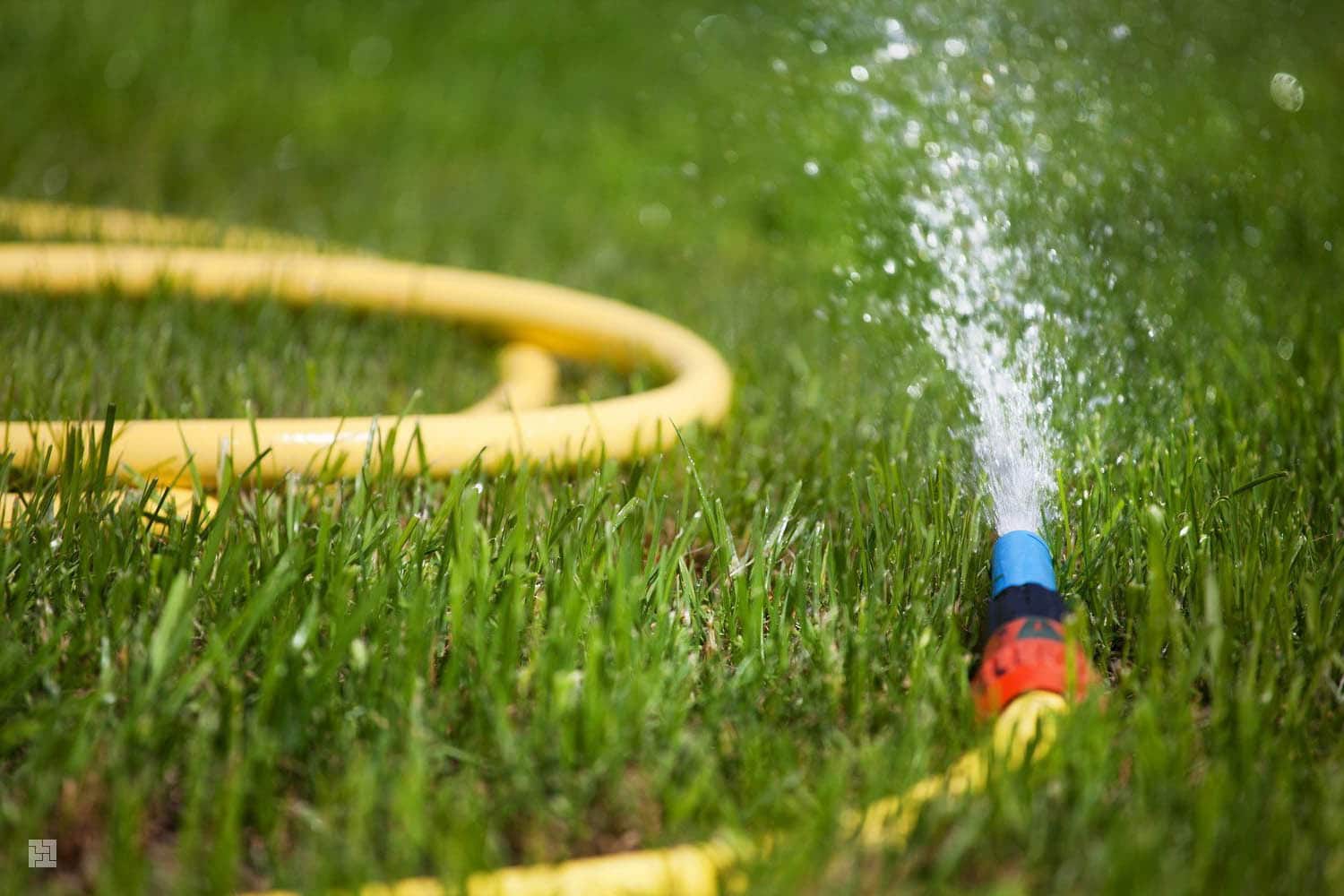
A pipe equipped with a straight lance is the classic for watering. The shape of the jet is adjustable. Take the opportunity to adapt the size of the drops and the power to the plants.
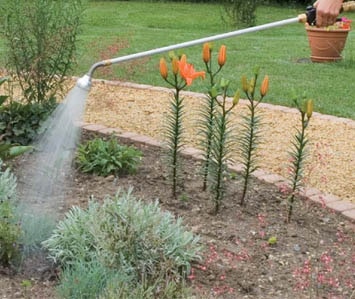
This adjustable flow sprinkler is reminiscent of the watering apple. It produces a jet of low pressure, and regular drops. It is ideal for flowers and vegetables with fragile foliage hard to reach.

The fitting of quick couplings on the pipe and on the supply valve facilitates operations. The change of sprinkler is done in the blink of an eye. The offer is wide, plastic or metal.
The meaning of the thread
All pipes have a synthetic fiber reinforcement that increases the resistance to pressure. Two processes are used: covering and knitting. The first, wire mesh wound in one direction and the other, eliminates the tendency to twisting. The knitting surrounds the interlaced mesh pipe for greater flexibility. New techniques eliminate twisting on anti-knot or anti-twist hoses.
Surface watering systems
The mobile surface sprinklers can bring water to all the plants in the garden, without taking the foot of the crane for long hours while holding the hose! To bring 10 l / m2 on a plot of 100 m2 with a tap discharging 1 m3 / h, it takes one hour …
All these sprinklers land on the ground or get stuck in the ground with a pick. They are supplied with water by a conventional garden hose, where they are connected by means of quick couplings. Once the quantity of water chosen is spread, simply move the sprinkler a little further and start again. To avoid having to turn off the water, equip your tap with a timer. It will trigger watering at the chosen time, for the fixed duration, Summer, so you can water in the middle of the night without having to get up.
Static or mechanical?
The static sprinkler is the simplest of the surface devices. It is the shape of the chamber in which the water and that of the nozzle arrive that form the jet. The basic unit covers small circular areas (2 to 3 m radius). The big advantage is that it works with a very low pressure (from 1 bar). There are now devices equipped with a plate allowing to water according to 5 to 7 predefined surfaces, going from the circle to the more or less narrow rectangle (up to 15 x 3 m). It is useful for watering the corners of a garden.
Rotating sprinklers, or tourniquets, consist of two or three horizontal arms that rotate under the pressure of water. Depending on the models and settings, they cover circular surfaces ranging from 50 to 300 m2, ie a radius of 4 to 10 m. These devices operate at relatively low pressures (1.5 bar) and water in fine rain. They are suitable for small and medium surfaces and are available on sled or tripod for watering the beds. There are also small steep models for watering flower beds or vegetables.
Oscillating or rectangular sprinklers are equipped with a boom carrying nozzles through which the water is pulsed. This boom oscillates around a horizontal axis thanks to a hydraulic motor moved by the water, It is possible to regulate the length and the width of watering to cover surfaces going from 70 to more than 300 m2 It is the type sprinkler best suited to most gardens. But to work, it needs a minimum working pressure of 2 bar at the tap. This system sprays the water less finely than the rotary sprinkler. It is therefore better not to use it in places where delicate plants dominate.
The guns or "spitters" propel a long-range rotating jet (10 to 15 m) that allows them to cover a large area (300 to 600 m2). The rotation is ensured either by a hammer, or by a hydraulic motor, silent. Stoppers allow precise adjustment with the watered area (0 to 3600 in general). To work, the guns need a high pressure (at least 2.5 bars). The power of their jet reserves them for the lawns and the vicinity of robust plants.
Choosing the right pipe
To water is to bring sufficient water to the foot of the plants. The important thing is the flow obtained at the end of the pipe. It is a function of its section (its diameter) and the pressure that determines the speed of the water. At equal pressure, a pipe of 19 mm ID has a flow twice as large as a 13 mm pipe.
A true "sandwich", a pipe is composed of several layers of materials (up to 5). The inner layer (the core) must be perfectly smooth to avoid curbing the water. The last layer, tinted in the mass, is made of an anti-abrasion material that protects the hose from freezing, sun, ultraviolet, wear …
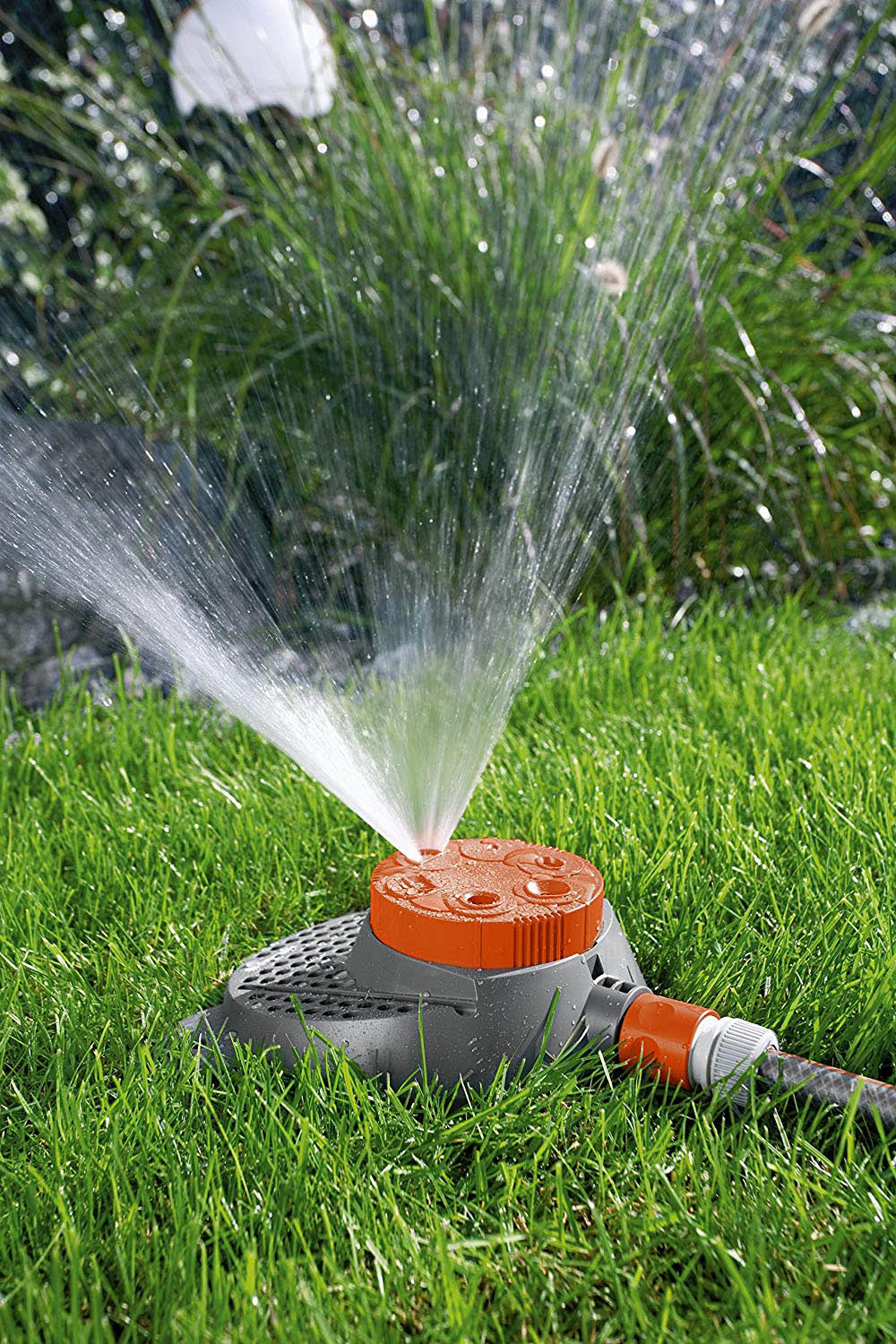
This multi-surface sprinkler has a circular plate with 6 different nozzles. Each corresponds to a precise watering surface (circular or rectangular).

Each arm of this metal sprinkler is equipped with a steerable nozzle. By closing them more or less, the jet obtained will be a coarse rain or, on the contrary, a fine drizzle.
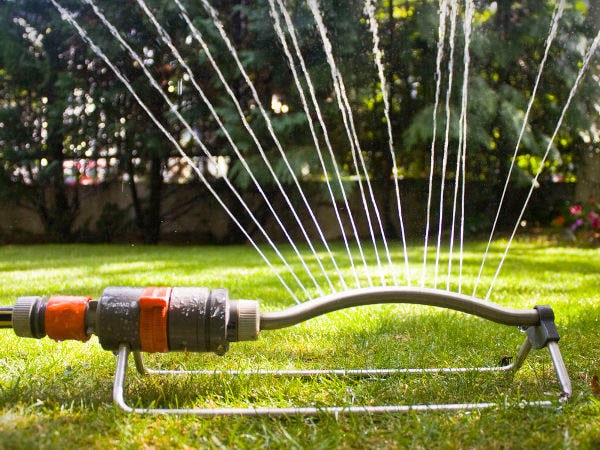
Powered by a hydraulic motor, the oscillating sprinkler works on a rectangular surface. This is adjustable by varying the width of the jet and the angle of movement of the ramp.
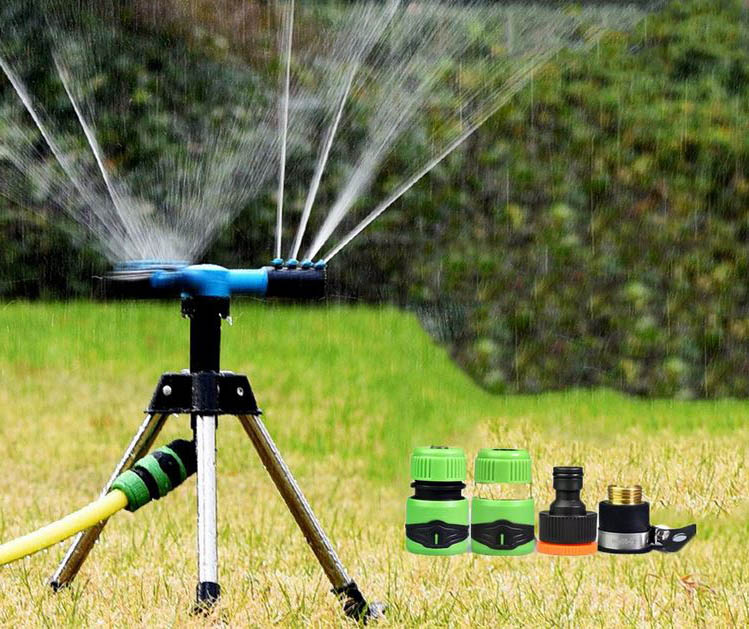
With this tripod, it is possible to raise a surface sprinkler so that it can perform all its functions without being hampered by lush vegetation. Appreciable in a kitchen garden!
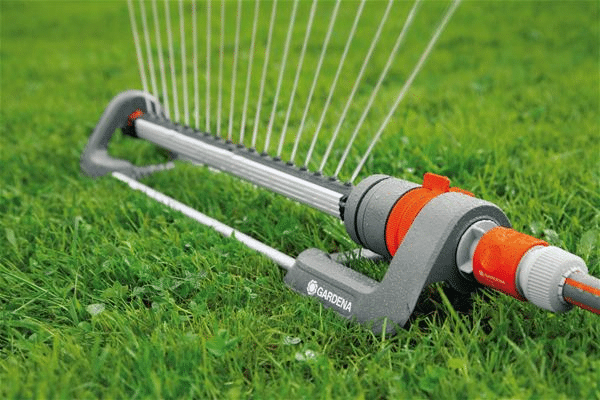
This oscillating sprinkler is equipped with a timer that stops the watering when the programmed time has elapsed. A flexible formula, which avoids having to buy a programmer.

For large areas like lawns, the watering can or spitting is ideal because its range is long. Adjustments make it possible to adapt the watered sector and the length of the jet.
Buried watering
By bringing water to all parts of the garden, buried watering is both discreet and practical: no need to drag a hose. Its implementation is less complicated than it seems. With a little patience and care!
Buried watering uses a multi-channel programmer, solenoid valves to open and close circuits, buried pipe, fittings and sprinklers that hide under the ground. They arise when they are under pressure, then retract when the valve closes, their work done.
The programmer is the brain of the installation. Incorporating a clock, he orders the solenoid valves to open or close. Coupled with a humidity probe or a rain gauge, it adapts the watering to the humidity of the earth or the amount of water that has fallen.
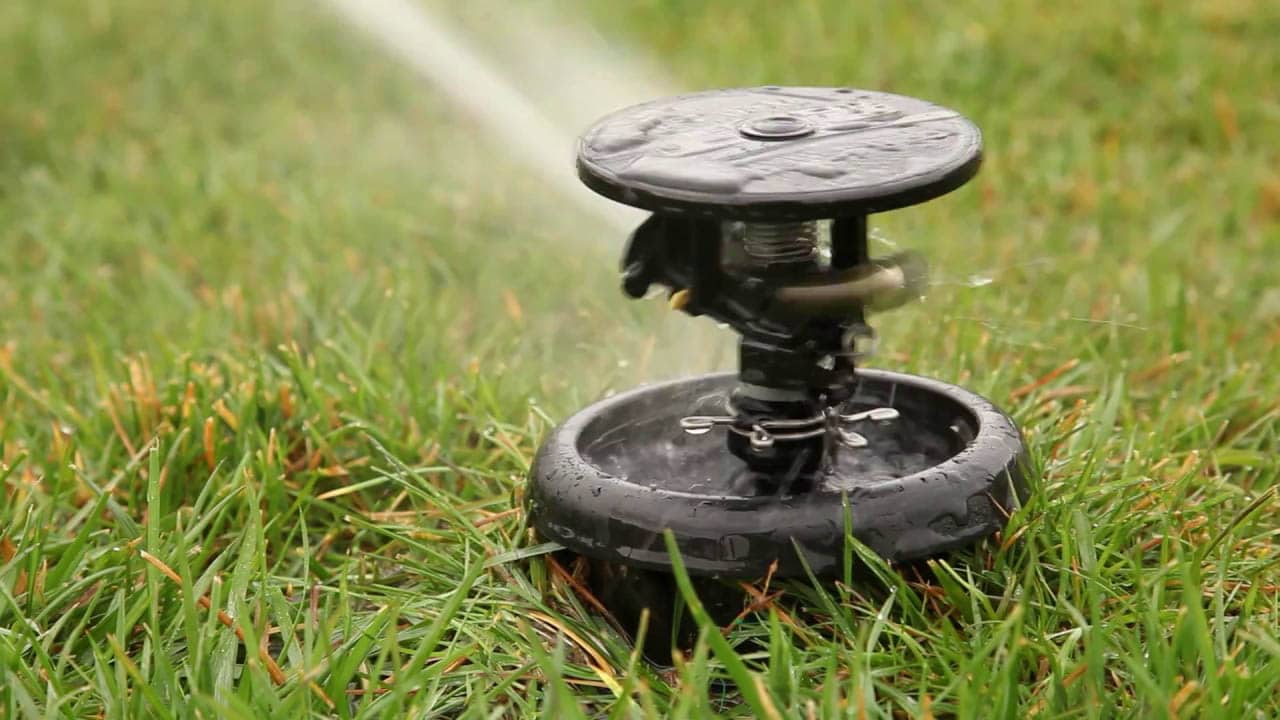
To account for flow and tap pressure, it is often necessary to split the plant into multiple networks. These will work alternately, managed by the multi-channel programmer (from 2 to 12 or more). But first you have to know the flow at the tap. Time the filling of a 10 l bucket. Divide this capacity by the time counted, and multiply by 3600. This gives you the flow in liters / hour. Finally, to calculate the number of networks needed, add up the consumption of all your sprinklers (see instructions) and divide the result by the tap capacity.
At rest, when the pressure has disappeared, the retractable sprinkler retracts automatically. Better to install automatic draining sprinklers, it avoids the bursting if the winter is very rigorous.
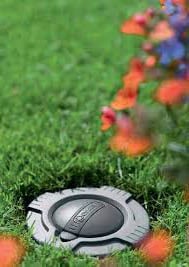
A rather simple circuit
A manifold, mounted downstream of the supply, provides all solenoid valves. Its size depends on the number of networks needed. Solenoid valves, automatic control valves managed by the programmer, operate at very low voltage (12 or 24 V), for better safety.
A black polyethylene pipe then runs to each buried sprinkler. Its diameter is determined by the size of the installation, as well as by the flow and the pressure. Quick couplings (collars of support) are used to connect the sprinklers. Extensions facilitate the leveling of each head, flush with the ground. It remains to choose the terminals …
The right sprinkler
The nozzles produce a fine rain, regular and fixed, circular or arcuate. Their range varies from 1 to 5 m. Retractable, they disappear as soon as the pressure falls to facilitate the passage of the mower. They require a pressure of 1 to 3 bar to work properly.
Turbines are designed to water larger areas. Their jet, with a range of 5 to 15 m, turns to make a complete circle or a portion. The operating pressure must be between 2 and 4 bar to obtain a satisfactory result. Rotating sprinklers with multiple jets are assimilated to turbines.
With a range of 2 to 8 m, they water very homogeneously, with a fine rain. There are also sprinklers drummers who retract like turbines (see photo below). Reserved for large areas without obstacles, they irrigate in a radius of up to twenty meters. The rotation of the jet is obtained by a flyweight which, by striking the jet of water, makes the system noisy.
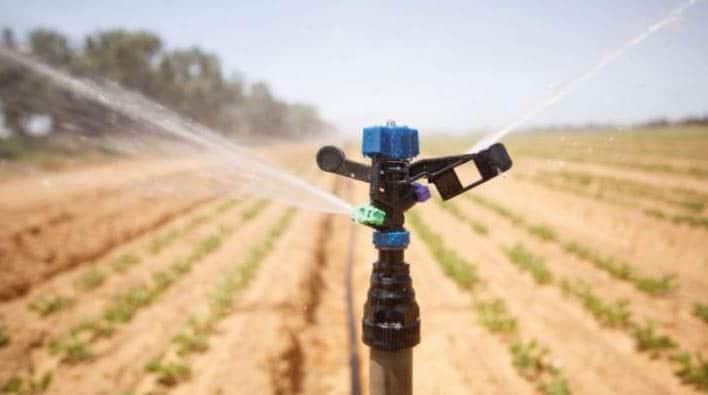
Each of these watering terminals has its own operating constraints. They do not need the same flow and their running time varies to bring the same amount of water to a surface. Never mount a nozzle and turbine on the same network, although some manufacturers now offer sprinklers with similar characteristics.
Running all these accessories is also not very rocket science. You just have to give yourself a little time to draw up the plan for your installation before going to buy the equipment.
Rather go to your distributor or an installer. They have software that automatically calculates the installation plan. Above all, they draw up a list of the necessary equipment.


